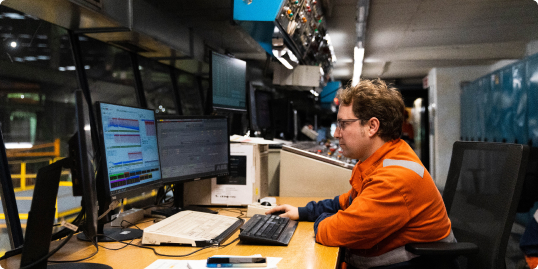Objectives
The main objective of the TWINGHY project is the demonstration of an advanced heat transfer process in the reheating furnaces of the steel sector, by the utilization of hybrid burners in order to increase the introduction of hydrogen for direct combustion with oxygen, while controlling the process with a Digital Twin of the furnace. TWINGHY’s activities are deployed on two fundamental pillars:

The demostration of a real reheating furnace operating
With different hydrogen and oxygen percentages, to discover the most suitable amount of oxygen for each hydrogen percentage and thus optimise the current process while reducing CO₂ and NOx emissions.

Control the combustions during the operation
The development of a Digital Twin of the reheating furnace to control the combustions during the operation and thus optimize the current process by reducing energy consumption and avoiding maintenance issues.
TWINGHY’s nine objectives
Fossil-free system transition: Multi-fuel burners with hydrogen blends
To demonstrate the furnace operation with multi-fuel burners operating with different hydrogen blends in natural gas in order to enable the transition to a fossil-free system. Developed burners will use, as an oxidizing agent, air and oxygen to reduce the environmental impact.
Integrating digitalized burner system for furnace control
Development and integration of the designed burner system including digitalized instrumentation to ensure the continuous monitoring and control of the physicochemical conditions in the furnace during the reheating process.
Green steelmaking: H₂ and O₂ for energy efficiency
To ensure that the change of fuel adapts to the existing infrastructure, keeping the established quality of the final product as well as the lifespan of the existing refractories and heat exchangers through design recommendation.
Efficient fuel transition for sustainable steelmaking
With different hydrogen and oxygen percentages, to discover the most suitable amount of oxygen for each hydrogen percentage and thus optimise the current process while reducing CO₂ and NOx emissions.
Scaling production with fuel mix analysis for sustainable output
To analyse the effect in scale production of the different mixes of fuels and maintain the production levels.
Modeling Furnace Operation with H₂ and O₂ Content Variations
To develop and validate physics-based and data-based models of the furnace operation indifferent scenarios according to the H₂ and O₂ content.
DT Generation for Fuel-based operational control using ML and HPC
To generate a DT based on the use of high-fidelity simulations, sensors data and Machine Learning (ML) using High-Performance Computing (HPC) to monitor and control the operational process under the selected fuel and oxidising agent.
Flexibility for clean hydrogen supply from renewables
To ensure the flexibility of the system to adapt to the clean hydrogen supply that is dependent on a flexible renewable energy supply.
Driving decarbonization
To raise awareness and interest of potential stakeholders and users in the project results,
identify ways of technology transfer and replicability to contribute to the decarbonization
of other sectors and types of furnaces through the developed DT